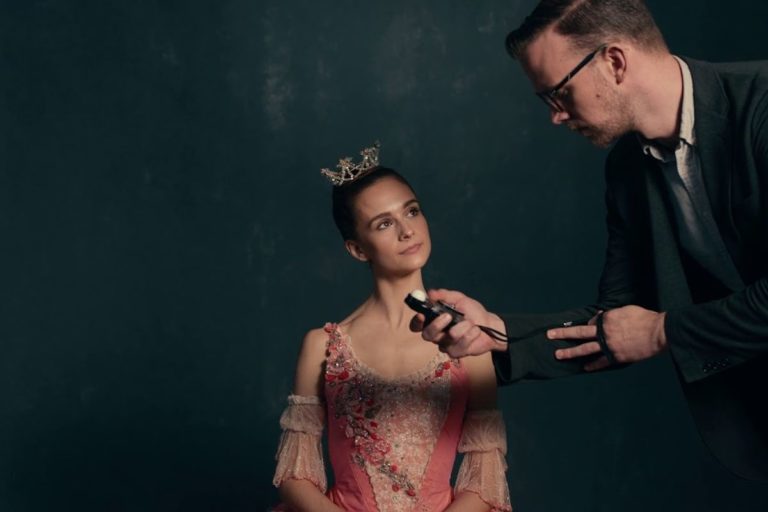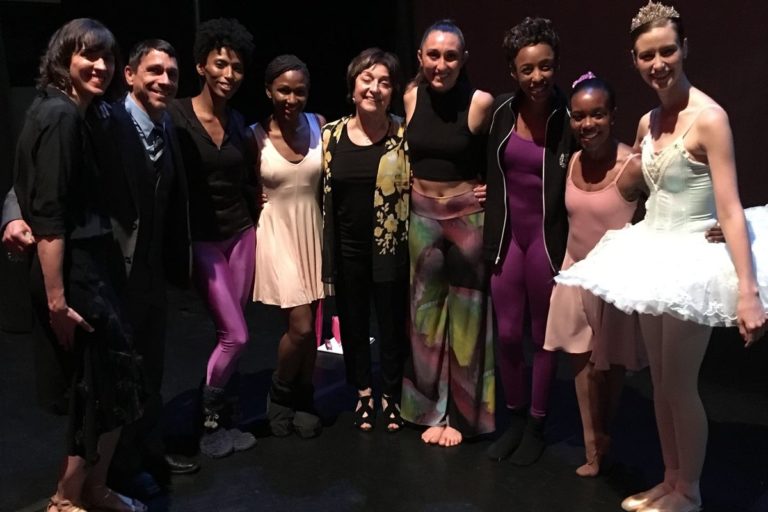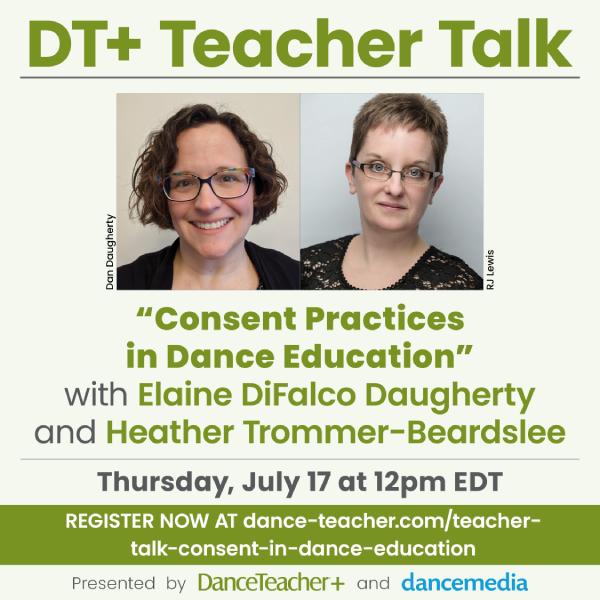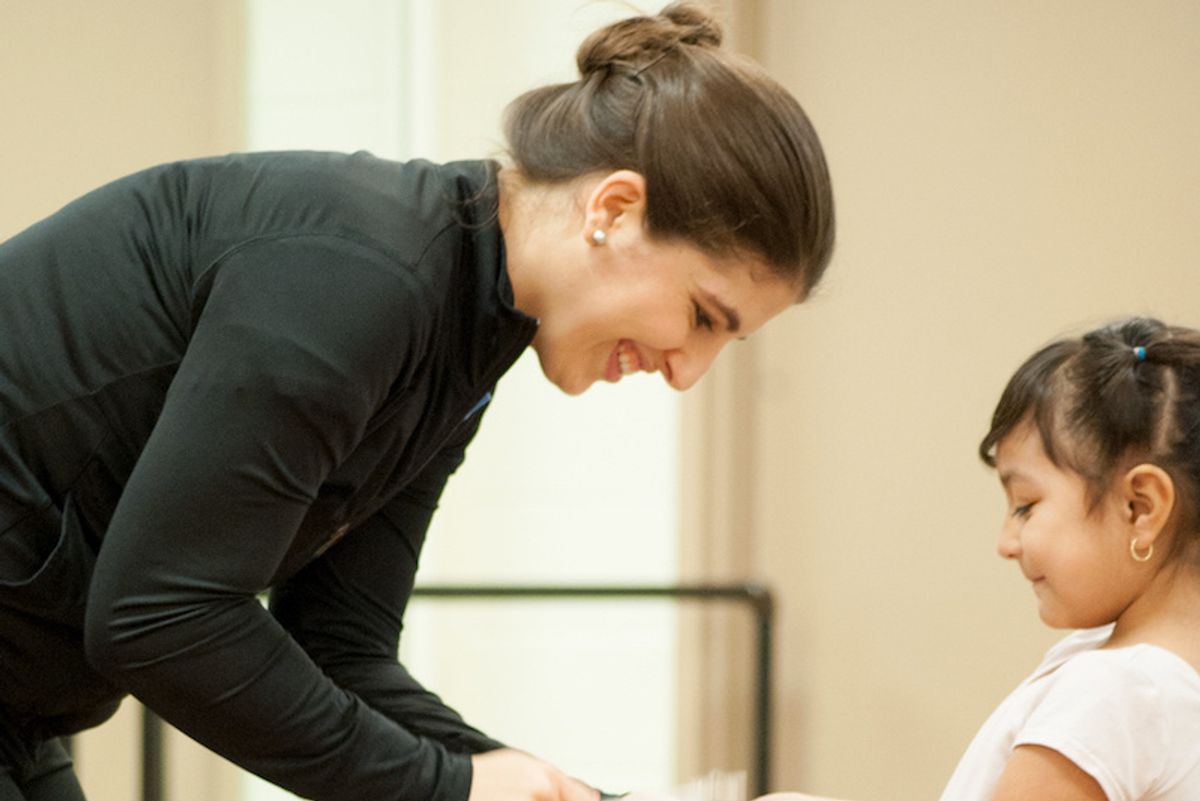
In Lexington, Kentucky, a good 70 percent of Jennifer Reynolds’ 3- to 12-year-old ballet students speak Spanish at home. To accommodate the dancers and families of the Bluegrass Youth Ballet Valley Park Outreach Program, she teaches bilingually in English and Spanish. “Often the parents feel like they’re left out of different things in society,” she says. “It’s wonderful to be able to create a space for the families to take their child to ballet class, participate and not feel nervous about it because they know what’s going on.”
Teaching in two languages takes extra time, skill and attention, but the rewards are evident not only with students, but for the teachers, as well. “I feel like it helps me have more humility,” says Luna Dance Institute teaching artist Cherie Hill. “It helps me open up my mind and consider my connection with the students, what our differences are and how I can expand my knowledge to include what they know.”
Finding Common Ground Through Language
Hill developed her own formula for conducting creative dance in both English and Spanish when Berkeley, California–based Luna Dance Institute began working with two elementary schools in Oakland. Since she is not bilingual herself, she worked closely with a classroom teacher to incorporate Spanish terminology into her weekly lessons. “I would tell her what the four or five main concepts for the week would be, and then she would send me translations for them in Spanish,” she says.
Hill creates a “word wall” with the week’s terms written out in both languages (rise/subir, fall/caer, advance/avanzar, retreat/retirarse) accompanied by pictures and Laban symbols. She teaches the class primarily in English, but emphasizes those terms by saying them in Spanish first, and then repeating them in English. It’s helpful to have the classroom teacher in the room in case she hits a bump in the road with language.
Reynolds’ experience is quite different, since she is a trained interpreter and fluent in both Spanish and English. She teaches most of her classes in both languages equally, but adjusts depending on the class. “I’ve gotten into a rhythm of interpreting myself,” she says. “I say something in one language, and I just repeat it in the other language.” This takes more time, but Reynolds says it’s well worth it to break down the language barrier and make everyone feel welcome in her class.
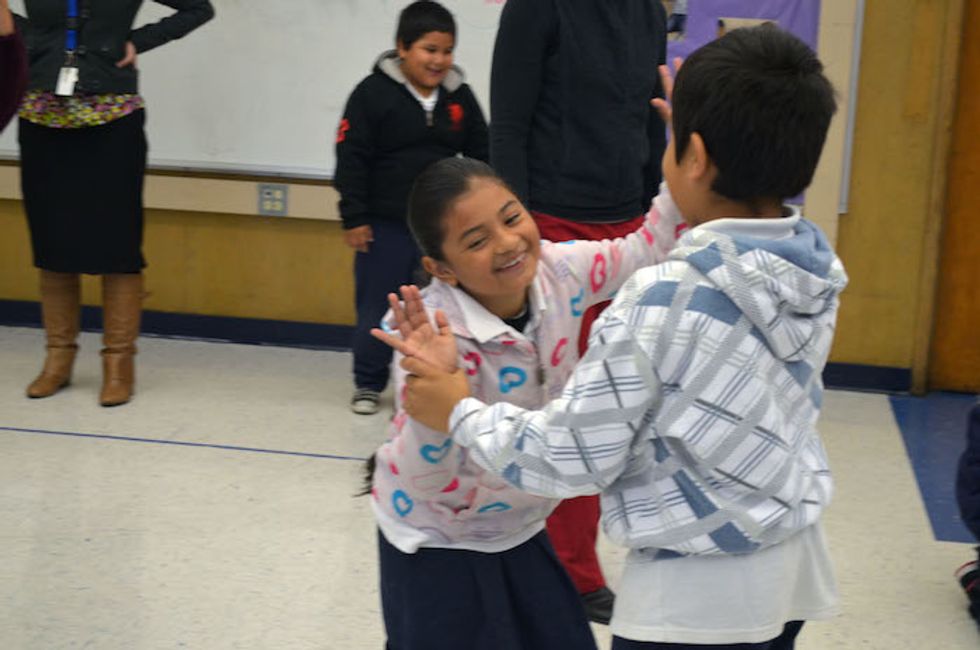
Cherie Hill developed her approach when Luna Dance Institute began working with Spanish-speaking students in Oakland, CA. Photo courtesy of Luna Dance Institute
As their students get older and progress, both teachers phase their classes into more English. Reynolds says she can often switch to teaching solely in English by the time the students are in their teens. “It’s not a set formula,” she says. “I’m flexible with where the kids are at and what’s needed.”
Hill notes, “I’ve seen students’ English comprehension really expand and improve through dance.”
When Bridging the Gap Yields Big Rewards
One surprising benefit of the bilingual classroom is language acquisition by the English speakers. Not only do the Spanish speakers grow more comfortable with English over time, but both Reynolds and Hill have seen their English speakers start comprehending Spanish. In particular, the consistent routine of a dance class lends itself to drawing parallels between the two languages.
And with increased understanding of language comes a growing acceptance of diversity. “I love to see the kids grow and become friends and have fun together in class,” says Reynolds. “They don’t even realize that they look different or sound different from one another.”
Teaching bilingually can create a warm atmosphere in the community, as well. While Reynolds’ approach has allowed her to include many parents in their children’s dance education, Hill cites the positive relationships she has developed with classroom teachers. “A lot of them really enjoy when we can teach in English because their students are learning that vocabulary,” she says.
In a progressively more diverse world, bilingual dance education offers students valuable skills for the future. “I think that learning to speak, listen and write in more than just one language is extremely helpful in any job,” says Reynolds.
Fundamentally, both teachers agree that whatever gets children dancing is well worth it. “For us to be able to move together is the ultimate success,” says Hill. “When we’re moving together, we’re doing what we came to do despite the language barrier.”

